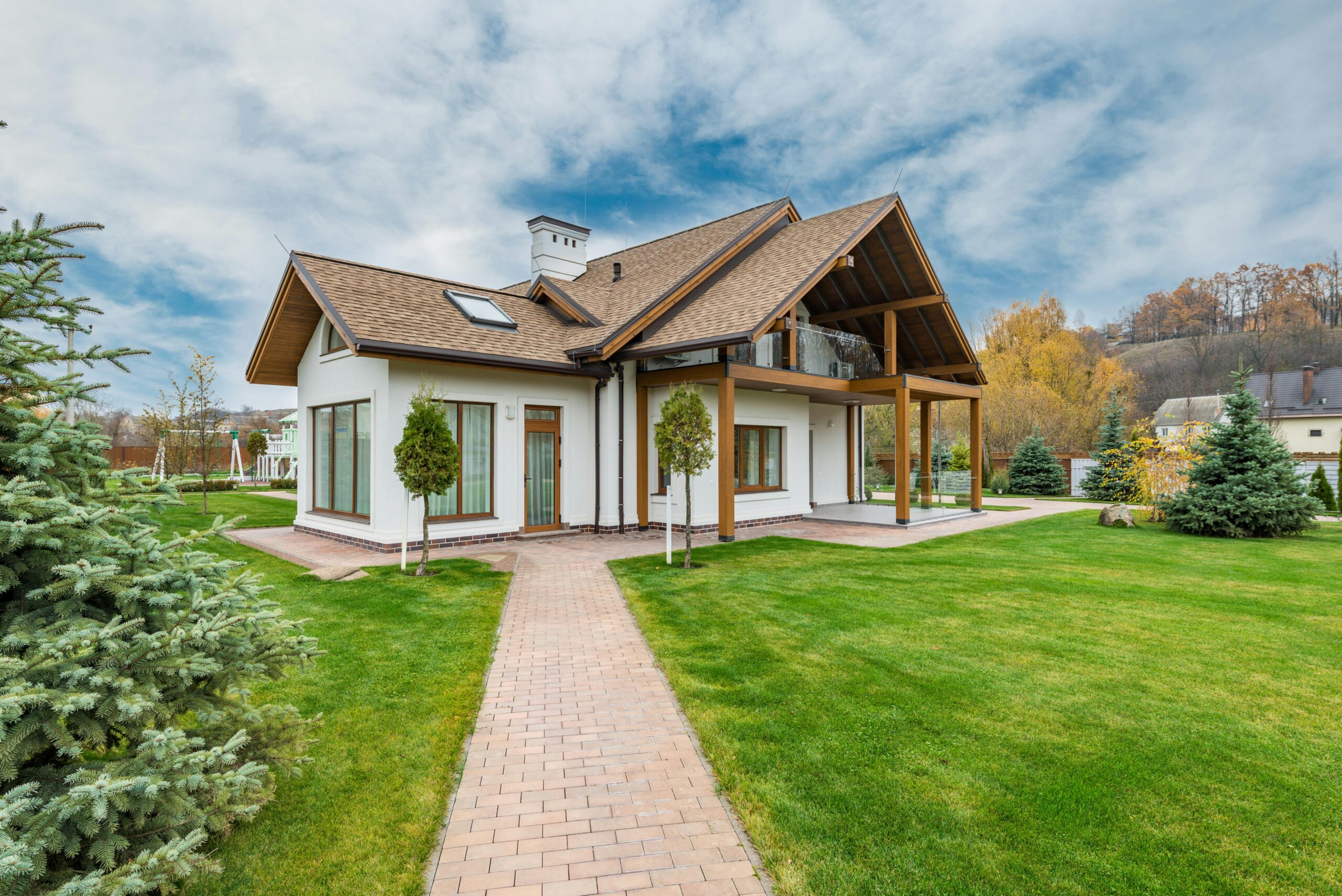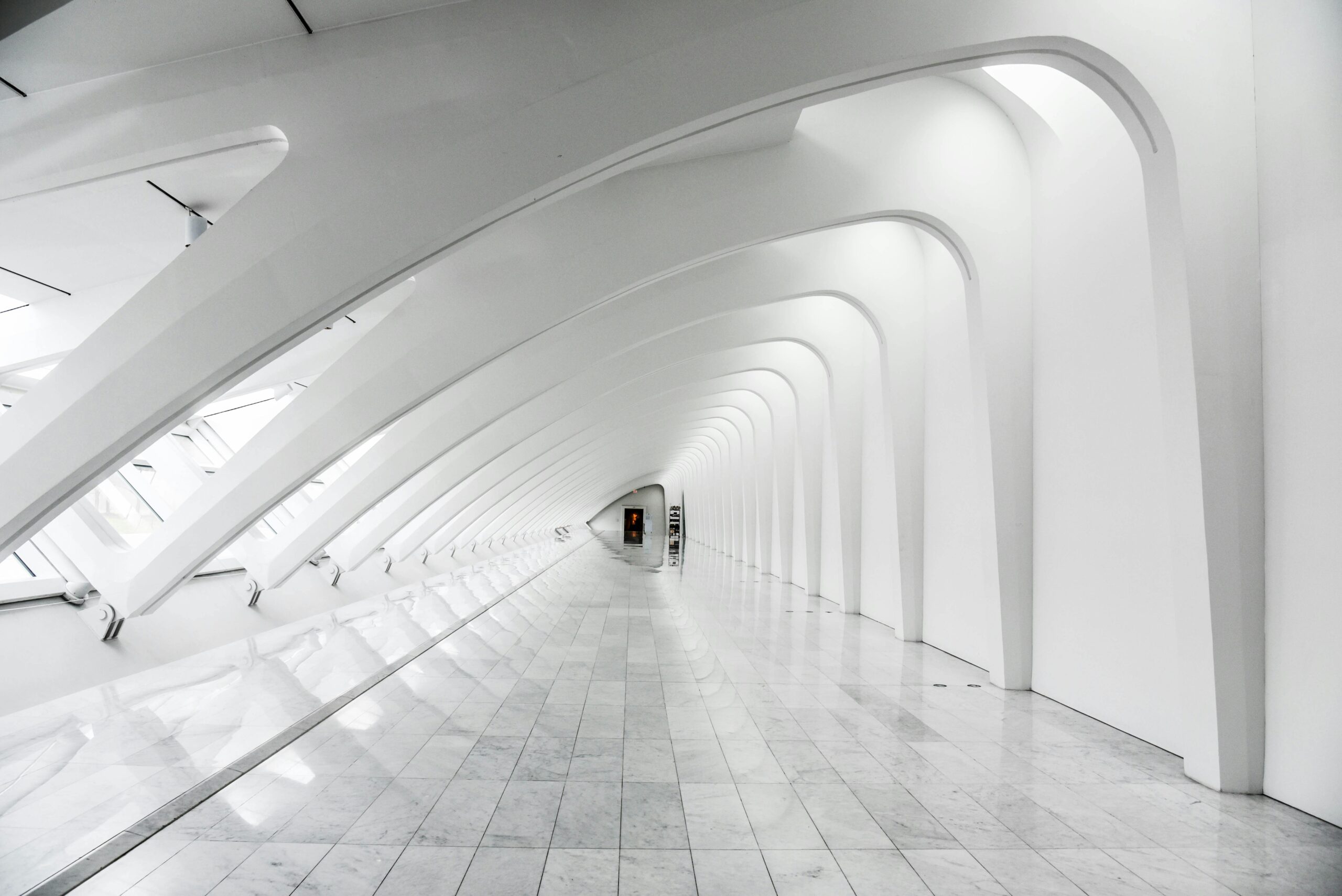In today’s fast-paced real estate market, engaging graphics may make all the difference in enticing potential buyers and tenants, interior and exterior 3D rendering for real estate agents is a proven marketing tool that has changed the way properties are advertised and visualized.
What is a 3D rendering?
3D rendering in real estate involves creating a digital model of a property or development, showcasing its dimensions, textures, and how it interacts with natural lighting, all before it’s physically built. This process utilizes advanced computer graphics to generate lifelike images or animations, allowing architects, builders, and potential buyers to visualize the space in detail. It’s an essential tool for marketing, design decision-making, and planning, providing a realistic preview of architectural projects.
Understanding the Process of 3-D Rendering
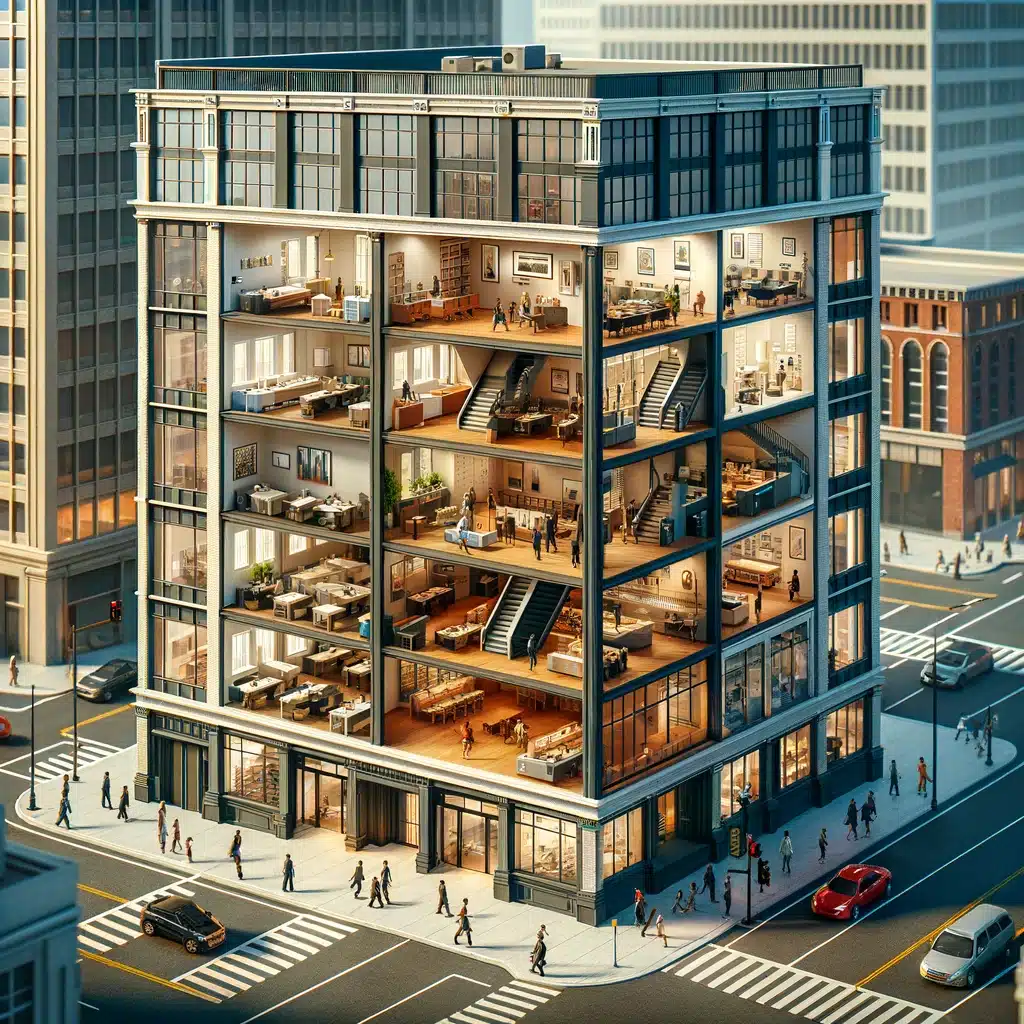
At its center, 3D rendering is a complex computational procedure that transforms digital models into visually beautiful pictures or animations. By understanding into its intricacies, you can grasp the underlying mechanisms and appreciate the fusion of artistry and technology that brings virtual worlds to lifestyles.
Modeling
Artists use specialized software to produce 3D models. This model specifies the form, texture, color, and other attributes of the objects or scenes being drawn.
TExturing
Textures are added to the surfaces of the 3D model to give them a realistic appearance. Textures can incorporate color, bump maps, specular maps, and other features to represent various materials such as wood, metal, and cloth. These days these 3D materials are so realistic that it is getting hard to see the difference between 3D visualizations and photography.
Lighting
Virtual lights are positioned across the area to illuminate the items. Lighting is essential for producing realistic renderings because it affects how surfaces reflect and absorb light.
Rendering
Once the scene is set up, the rendering program evaluates how light interacts with the scene’s objects and produces a 3D image based on that knowledge. This technique may be CPU-intensive and time-consuming, particularly in complicated landscapes with realistic lighting effects.
Post-processing
After the rendering is completed, artists can use photo editing tools to make further edits and additions to the image. This may involve adding effects such as depth of focus, lens flares, color grading, and others.
Applications and Advantages of 3-D Rendering
Diving into the world of 3-D rendering unveils a myriad of practical programs and inherent advantages throughout numerous industries.
From improving product layout to streamlining architectural visualization, understanding those uses and blessings underscores the necessary function of 3-D rendering in modern-day workflows.
Marketing and advertising
Marketers use 3D rendering to produce eye-catching imagery for promotional materials like brochures, posters, and internet commercials. It allows companies to present products, thoughts, or ideas in a visually appealing way that captures attention and resonates with their target audience.
Training and Simulation
3D rendering is used in simulations and training programs to mimic real-world circumstances in a safe and controlled setting. This technology is especially useful in industries like aviation, healthcare, and military training, where realistic simulations may assist in improving abilities, making better decisions, and reducing dangers.
Interior Design
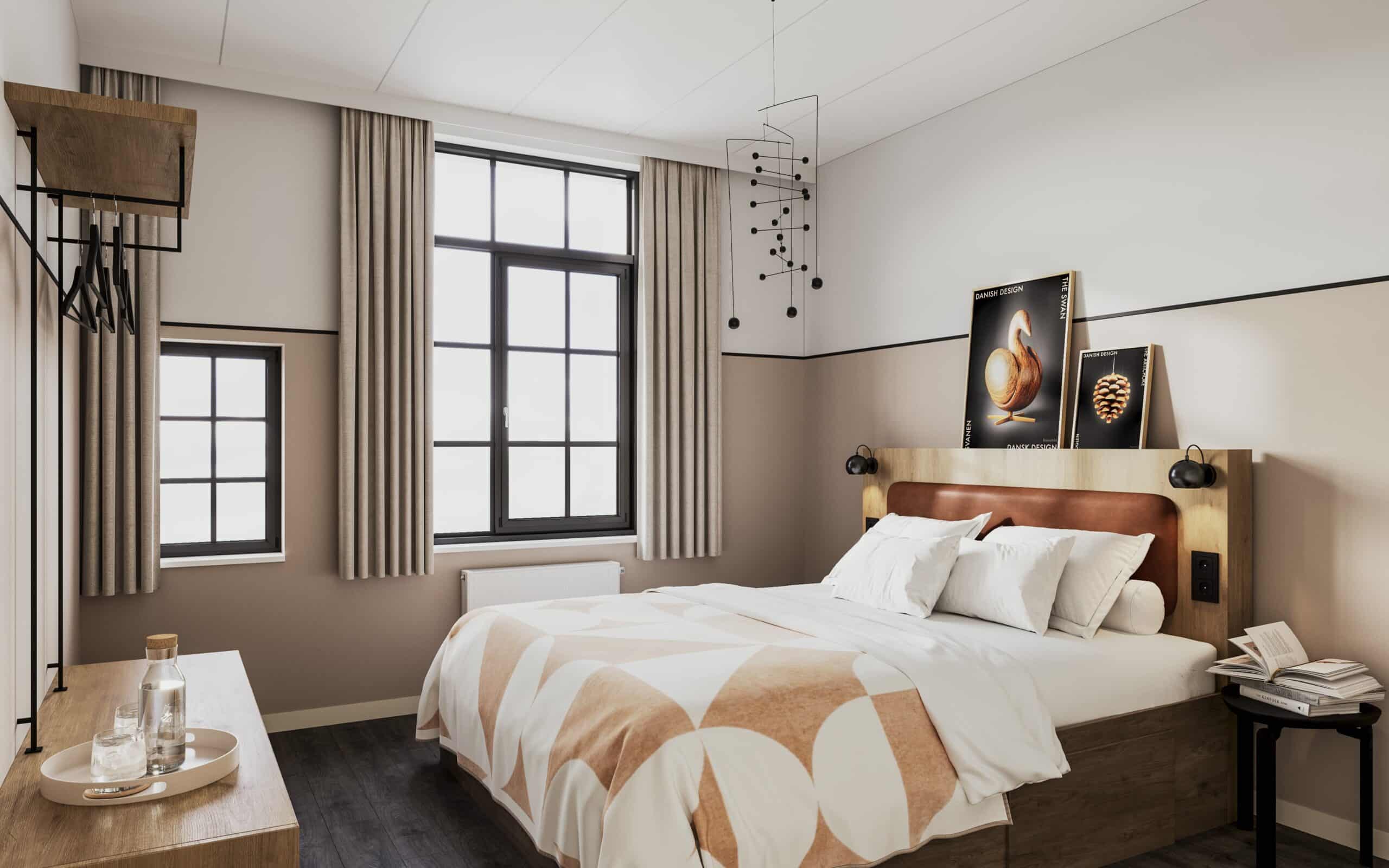
Interior designers use 3D rendering to visualize room layouts, furniture placement, and decorating alternatives. It enables clients to better comprehend design concepts and make educated judgments regarding colors, materials, and furniture before making any actual modifications to the space.
Engineering and manufacturing
Engineers and designers use 3D rendering to visualize prototypes, simulate mechanical components, and evaluate product performance. It enables them to find design problems, improve functionality, and expedite the production process.
Architectural Visualization
Architects and designers utilize 3D rendering to generate lifelike models of structures, interiors, and landscapes before they are built. This enables stakeholders to visualize ideas, make educated decisions, and detect possible concerns early on in the design process.
Product Visualization
Companies utilize 3D rendering to highlight their items in commercials, catalogs, and online marketplaces. It enables them to display things from several perspectives, emphasize features, and demonstrate functioning in a visually appealing manner.
Entertainment & Media
The film, television, and gaming industries all rely heavily on 3D rendering to provide breathtaking visual effects, lifelike characters, and immersive virtual settings. This technology helps filmmakers and game developers to realize their creative ambitions and attract audiences with stunning images.
Cost and Time Efficiency
3D rendering is significantly less expensive and takes less time than traditional methods of physical prototypes and photography. It enables quick iteration, simple adjustments, and the creation of high-quality graphics without the need for expensive materials or complex production settings.
Interior rendering

Interior design rendering is the process of constructing a three-dimensional representation of space that is as realistic as feasible. Simple 2D floor plans may be turned into 3D designs with the most realistic features by using specialized 3D modeling and visualization software. Design renderings allow you to visualize how the house, office, shopping center, hotel, or other premises will look in the future throughout the project development stage.
Purpose
3D interior rendering is generally used by interior designers, architects, homeowners, and companies to visualize interior spaces prior to making real modifications. It enables stakeholders to see how various design components, such as furniture, lighting, colors, and materials, interact to produce a coherent and visually appealing setting.
Process
Interior designers or architects use specialized software to produce a three-dimensional model of the interior space. They then add textures, lighting, and other aspects to the model to make it more lifelike. The final produced pictures or animations demonstrate the design concept from numerous perspectives, allowing clients to better grasp the suggested layout and make educated design decisions.
Benefits
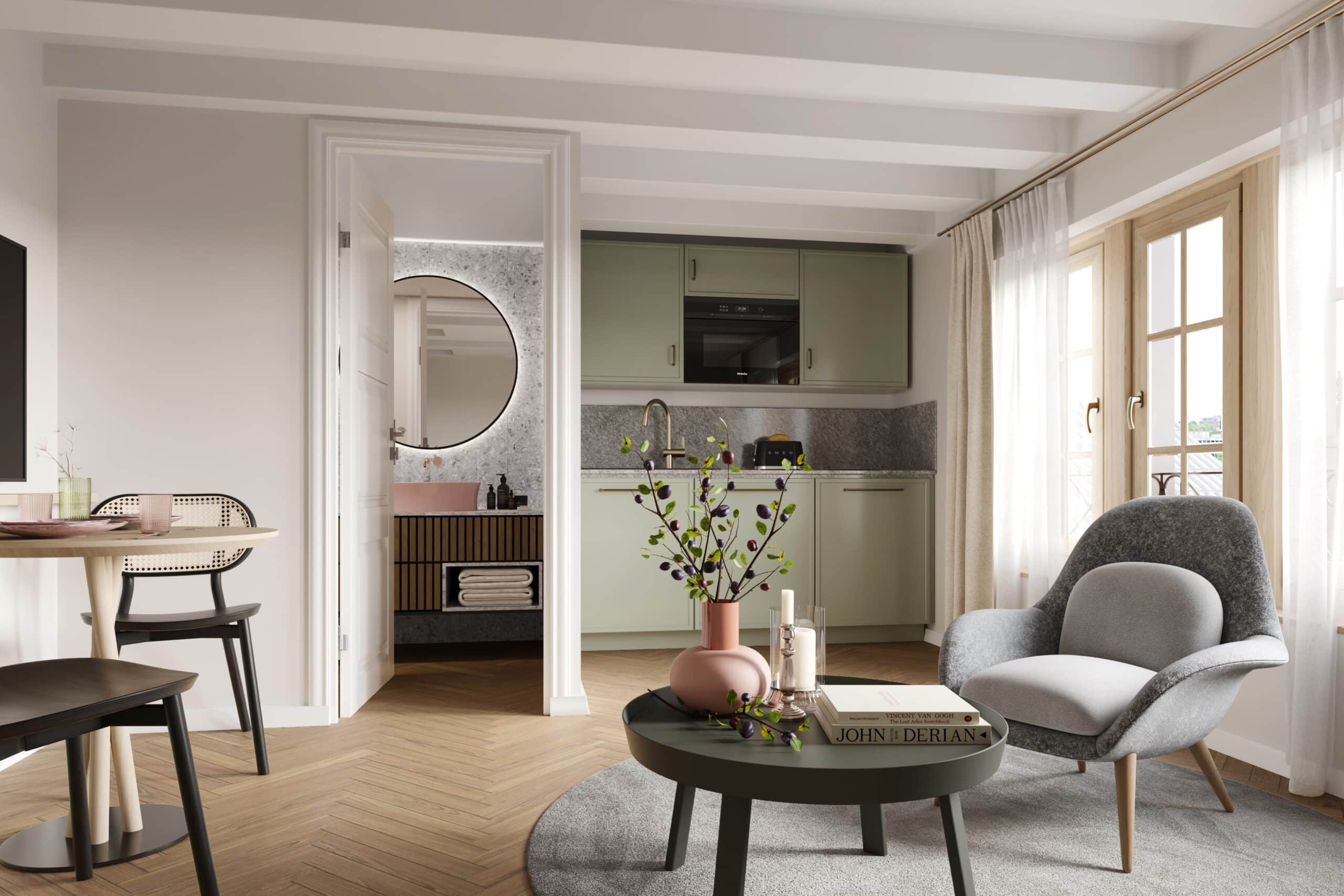
3D interior visualization allows designers and clients to experiment with various design possibilities, detect possible concerns, and make changes before construction or restoration begins. It helps to speed the design process, prevent misunderstandings, and guarantee that the end product fulfills the client’s expectations.
3D Interior Rendering for Real Estate Agents
Real estate brokers utilize 3D interior rendering to sell their properties to potential buyers and tenants. It enables them to show virtual tours or realistic photographs of the interior areas, emphasizing essential characteristics and selling qualities of the home.
Real estate brokers and marketing firms work with 3D rendering specialists to generate visually attractive renderings of the property’s interior. This might include developing 3D models of rooms, adding furniture and décor, and improving lighting to produce welcoming and lifelike photographs or movies.
Advantages
3D interior rendering assists real estate agents in increasing interest in their listings by providing immersive and interactive experiences for prospective buyers. It enables purchasers to imagine themselves living in the space, explore various layout choices, and gain a greater understanding of the property’s potential. Furthermore, it helps set listings apart in a competitive market, resulting in speedier sales or rents.
Virtual Staging
Real estate brokers may use 3D rendering to realistically stage empty or obsolete spaces with current furniture, décor, and finishes. This allows them to highlight the space’s potential and assist purchasers in visualizing how it may appear with their unique style, thus increasing the property’s attractiveness and value.
Flexible customiZation
Real estate brokers can customize 3D interior renderings for specific target markets or buyer preferences. They may quickly change the colors, designs, and layouts to suit different populations or highlight elements that are likely to appeal to potential purchasers, such as open floor plans, luxury facilities, or smart home technology.
TIme Savings
Traditional staging and photography need time-consuming setup and coordination with staging experts and photographers. In contrast, 3D interior rendering provides shorter turnaround times, allowing real estate brokers to sell homes and remain ahead of the competition in a volatile market.
Remote viewing and accessibility
3D interior renderings enable remote viewing of houses, allowing prospective buyers to explore interiors from any location with an internet connection. This accessibility is especially beneficial for out-of-town purchasers or those who are unable to attend in-person viewings, broadening the reach of the property listing and attracting a larger pool of prospective buyers.
Differentiation and branding
Real estate brokers that include 3D interior rendering into their marketing plan can separate themselves from competition and build a distinct brand identity. High-quality drawings communicate expertise, attention to detail, and creativity, establishing agents as trusted advisers that go above and beyond to effectively promote homes.
Exterior rendering
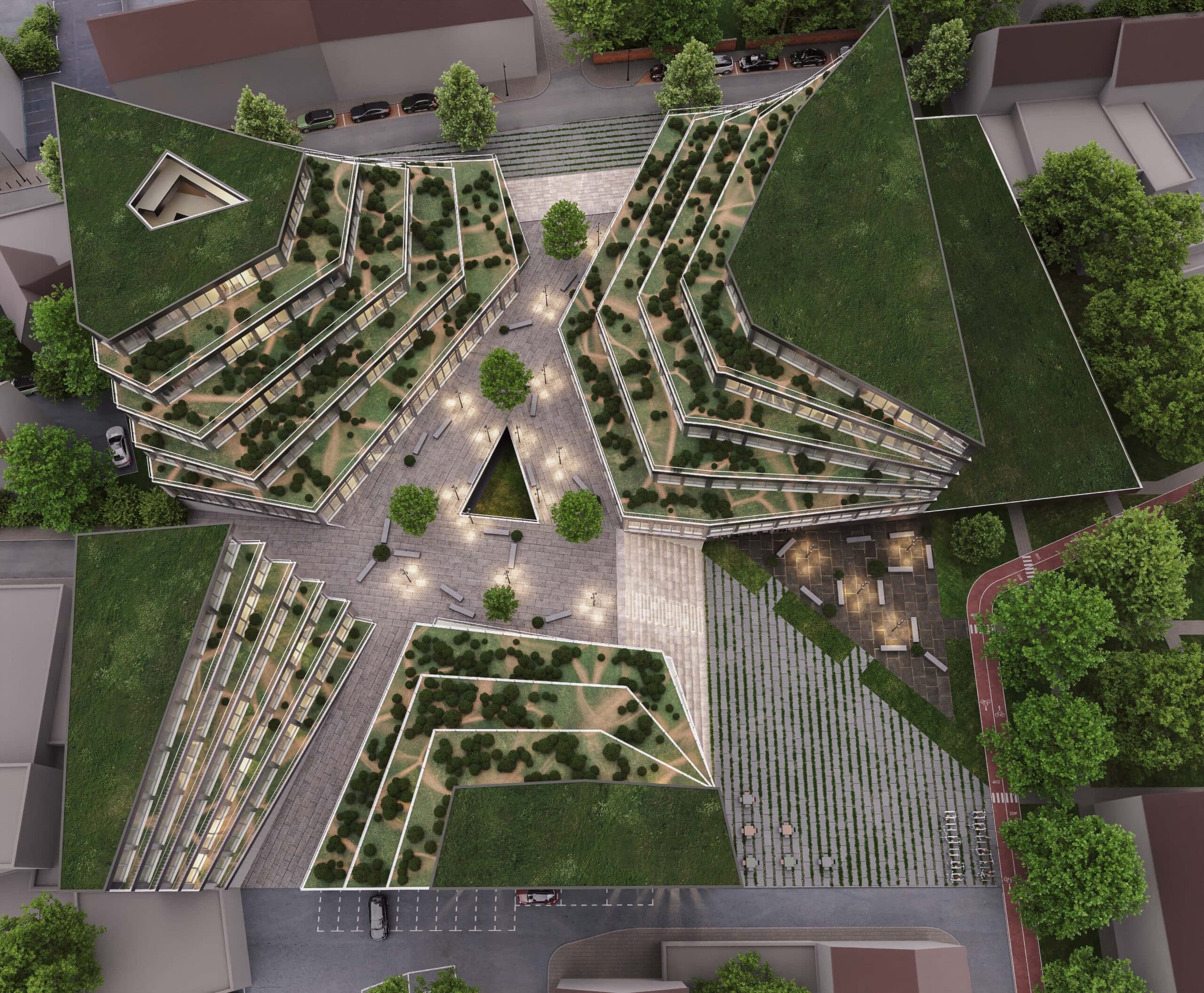
Purpose
3D exterior rendering is the process of producing accurate visualizations of the exteriors of buildings or properties. Its major goal is to assist stakeholders in visualizing a property’s external look prior to construction or refurbishment. It enables architects, designers, developers, and real estate agents to present architectural concepts, landscaping, materials, and other external components in a realistic and immersive way.
PRocess
The procedure starts with building a 3D model of the outer environment using specialized software. This includes describing the building’s shape, structure, and architectural elements, such as walls, windows, doors, roofs, and landscaping.
After constructing the 3D model, textures are used to imitate various materials, including brick, stone, wood, glass, and metal. Texturing improves realism and depth in the depiction.
Virtual lights are deployed across the external picture to provide a realistic illumination of the structure and surroundings. Lighting is essential for emphasizing architectural elements, casting shadows, and improving the overall ambiance of the depiction.
The 3D scene is rendered with rendering software, which calculates how light interacts with the scene’s objects and surfaces to produce a lifelike image or animation. This procedure can be time-consuming, particularly for complex sceneries with fine features.
Following rendering, post-processing techniques like color correction, compositing, and effects can be used to improve the final output and attain the required visual quality.
Benefits for real estate agents
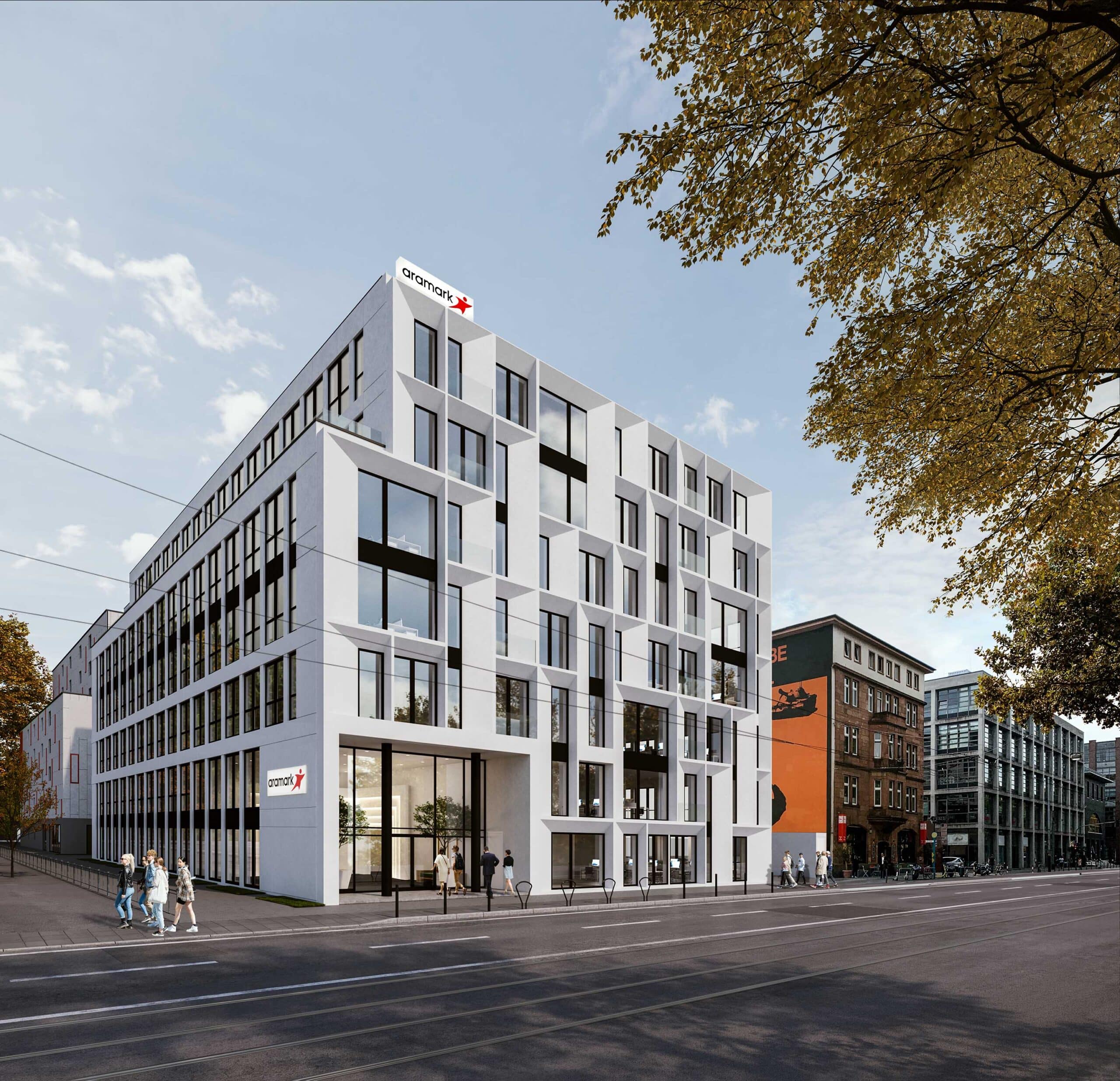
A Competitive Advantage
Real estate brokers get a competitive advantage by using 3D exterior rendering to display homes in a visually attractive and engaging manner. High-quality renderings stand out in listings and marketing materials, drawing the attention of prospective buyers.
Improved communication
3D exterior renderings allow real estate brokers to efficiently explain design concepts, remodeling plans, and new building projects to clients and stakeholders. Visualizations bridge the gap between ideas and reality, ensuring that everyone involved understands the suggested changes.
Customization
Exterior aspects like colors, materials, landscaping, and architectural styles may all be easily customized using 3D rendering. Real estate brokers can customize drawings to reflect client preferences, market trends, or unique property attributes, therefore increasing appeal and engagement.
Quick turnaround
Compared to previous means of architectural visualization, 3D exterior rendering has a faster turnaround time. Real estate brokers may quickly create high-quality renderings, allowing them to promote properties faster and remain ahead of the competition in a dynamic market.
Visual realism
Photorealistic 3D renderings provide potential purchasers with a realistic representation of the property’s external appearance. Real estate brokers can accurately present architectural elements, landscape features, and external finishes, allowing purchasers to visualize themselves living in the area and make educated judgments.
Wrapping Up: Interior and Exterior 3D Rendering for Real Estate Agents
3D rendering technology has transformed the way real estate brokers sell their homes, both internally and internationally. Through the development of lifelike visualizations, 3D rendering allows brokers to better convey design concepts, improve property presentations, and entice potential buyers with immersive experiences.
3D rendering in interiors allows clients to see rooms before making any real alterations, making it easier to explore different design possibilities. This not only speeds the design process, but also minimizes misconceptions and assures customer pleasure.
Real estate brokers, on the other hand, may use 3D exterior rendering to present houses in their best light, accentuating architectural details, landscaping, and curb appeal.
Agents may pique potential buyers’ interest and differentiate properties in a competitive market by providing accurate previews of the property’s exterior.
Overall, 3D rendering provides real estate brokers with a competitive advantage, greater communication, customization choices, quicker turnaround times, and visual realism. By efficiently harnessing this technology, agents may improve their marketing efforts, attract more buyers, and sell homes more successfully.
Frequently Asked Questions: Interior and Exterior 3D Rendering for Real Estate Agents
Q. What is 3D rendering, and how can it help real estate agents?
3D rendering is the process of producing realistic or stylized graphics from three-dimensional objects. It gives real estate professionals the advantage of exhibiting homes in immersive and visually appealing ways, allowing them to attract more buyers and tenants.
Q. How does 3D rendering work in real estate marketing?
Real estate brokers work with 3D rendering professionals to generate realistic representations of interior and outdoor locations. This includes modeling, texturing, lighting, rendering, and post-processing to create visually appealing images that emphasize the property’s qualities and possibilities.
Q. How can 3D rendering help to showcase the external aspects of properties?
Exterior rendering involves creating 3D models of buildings and landscapes, which are then supplemented with textures and lighting to offer accurate portrayals of the property’s external look. This allows real estate brokers to convey design concepts, customize visualizations, and provide potential purchasers precise previews of the property’s appeal.
Q. Can real estate agents use 3D rendering to reach a larger audience?
Yes, 3D rendering enables remote viewing of houses, allowing potential buyers to explore interiors and exteriors from anywhere with an internet connection. This convenience may attract a bigger pool of potential purchasers, including those who are unable to attend in-person viewings.
Q. What is the biggest distinction between exterior and interior renderings?
Exterior rendering is concerned with visualizing the external look of buildings or properties, which includes architectural aspects, landscaping, and the surrounding environment. Interior rendering, on the other hand, focuses on visualizing building interiors such as rooms, furnishings, lighting, and décor.
Q. What features are emphasized in exterior rendering?
The outside drawing displays the property’s architectural design, materials, colors, landscaping, and general curb appeal. Its goal is to create a realistic picture of how the building will seem from the outside, allowing stakeholders to visualize the finished product before construction or refurbishment begins.





